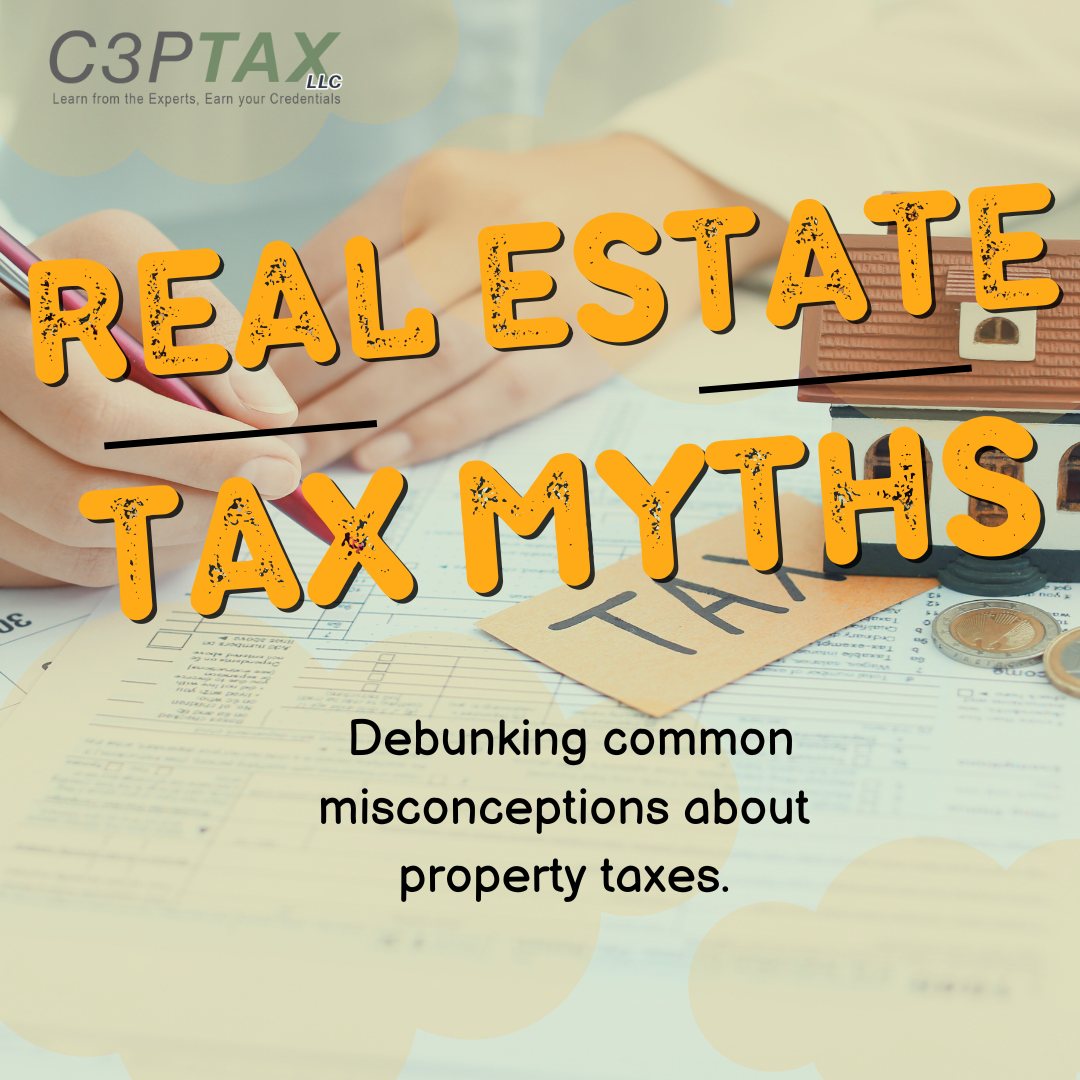

Introduction to Tax Liens
A tax lien is a legal claim placed on a property by a government authority due to unpaid property taxes. This measure ensures that the government has a structured mechanism to secure unpaid taxes owed by the property owner. Essentially, a tax lien acts as a writ declaring that the local or state government has an interest in the property, blocking the owner’s ability to sell or refinance until the debt is settled.
The process typically begins when a property owner fails to pay their property taxes by a specified deadline. Local municipalities, counties, or states issue a notice of the unpaid tax amount and provide the owner with a timeframe to settle the balance. If the owner fails to pay within this period, the taxing authority will officially place a tax lien on the property.
The primary objective of this lien is to ensure the recovery of the owed taxes, covering the government for the shortfall in expected revenue necessary for public services and infrastructure. Unlike a mortgage, which is a voluntary lien where the property owner consents to offer the property as collateral, a tax lien is involuntary. It is unilaterally imposed by the government and has a superior claim over other debts, a priority termed as “first in line” status.
Moreover, these liens not only serve to ensure that the government procures the necessary funds but also act as a deterrent against non-compliance in property tax payment. The existence of a tax lien subjects property owners to potential financial and legal ramifications, including incurring significant interest rates and fines, and possibly leading to more severe actions like property foreclosure.
Understanding the fundamental nature of tax liens and their ramifications is crucial for property owners. It emphasizes the importance of timely tax payments, the consequences of neglecting financial responsibilities, and the overall impact on property rights and ownership stability.
How Tax Liens Work
Tax liens are legal claims imposed by taxing authorities, typically local governments or municipal tax authorities, against properties whose owners have failed to pay their property taxes. The process initiates when a property owner misses a scheduled tax payment. Initially, the local government sends a series of legal notices to the delinquent property owner, informing them of their unpaid taxes and the potential consequences. These notices serve as both a warning and an opportunity for the property owner to settle their tax debt to avoid further repercussions.
If the property owner fails to address the outstanding debt after receiving these notices, the taxing authority will formally impose a tax lien against the property. This lien legally binds the property, securing the government’s claim to the delinquency amount. Typically, this imposition occurs within a few months after the initial tax payment due date has passed. The exact timeline can vary depending on local regulations and statutes.
The tax lien itself holds significant legal weight, often taking priority over other forms of debt against the property. This means that if the property is sold or foreclosed upon, the tax lien must be satisfied before any other creditors, including mortgage lenders, receive payment. The priority status of tax liens underscores the critical nature of resolving property tax debts promptly.
Once a tax lien is in place, the property owner can still resolve the matter by paying the outstanding taxes, along with interest and penalties. In many jurisdictions, property owners have a specific redemption period during which they can clear the lien and retain ownership of the property. However, failure to do so can lead to more severe outcomes, such as tax lien sales or foreclosure, where the local government may auction off the lien or, ultimately, the property itself to recover the owed taxes.
Consequences of a Tax Lien on Property Ownership
When a tax lien is placed on a property, it signifies that the property owner has failed to pay their taxes. Such a lien has direct and indirect impacts on property ownership, visibly altering the owner’s financial and legal standing. A primary consequence of having a tax lien is that it restricts the owner’s ability to sell or refinance the property. Since the lien ensures that any proceeds from the sale of the property will first be used to satisfy the outstanding debt, potential buyers or lenders may be wary of engaging in a transaction involving a liened property.
The presence of a tax lien also negatively affects the owner’s credit rating, making it challenging to secure future loans or credit. This degradation in creditworthiness stems from the perception that the property owner is a high-risk borrower, further hampering their financial flexibility. Moreover, a lien may compound over time, amassing interest and penalties, thereby inflating the amount owed and exerting additional financial pressure on the owner.
Legal ramifications can escalate if the lien continues to remain unpaid. The taxing authority may initiate foreclosure proceedings, which ultimately could result in the owner losing their property. During foreclosure, the property is typically sold at a public auction, often at a price lower than its market value, to recover the unpaid taxes. This not only results in the loss of homeownership for the original owner but also tarnishes their financial record, making future property acquisition difficult.
Beyond the immediate financial constraints, a tax lien can create a prolonged state of uncertainty and stress for the property owner. The lien remains attached to the property until the owed taxes are fully paid, meaning any future ambitions regarding the property are effectively on hold. As such, dealing with a tax lien should be a priority for any affected property owner to mitigate these serious and far-reaching consequences.
Resolving a tax lien is often a top priority for property owners who find themselves burdened by this encumbrance. Addressing a tax lien can not only prevent the sale of the property but also restore the owner’s financial credibility. There are multiple methods to resolve a tax lien, with each approach having its pros, cons, and procedural complexities.
The most straightforward method to resolve a tax lien is by paying off the debt in full. This entails covering the entire amount of delinquent taxes, accrued interest, and any associated penalties. Once the debt is settled, the taxing authority will typically issue a release of lien, which clears the encumbrance from the property’s title. This solution, while direct, can be financially challenging for many property owners, especially given the potentially large sums involved.
For those unable to make a lump-sum payment, setting up a payment plan with the taxing authority can be a viable alternative. These installment agreements allow the property owner to pay off the debt gradually over a specified period. It’s important to communicate proactively with the taxing authority to negotiate terms that are manageable. However, property owners should be aware that interest and penalties may continue to accrue during the period of the payment plan, potentially increasing the total amount paid.
In cases where the property owner believes there has been an error, disputing the lien is another possible route. This involves presenting evidence to the taxing authority to demonstrate that the lien was filed incorrectly or the amount due is inaccurate. Successfully disputing a tax lien requires a thorough understanding of the relevant tax laws and may necessitate legal or professional assistance. Common grounds for dispute include clerical errors, incorrect property assessments, or proof of previous payment. The challenge here lies in the burden of proof resting heavily on the property owner, which can be a lengthy and arduous process.
Each method of resolving a tax lien comes with its own set of challenges, and property owners need to carefully consider their financial situation, resources, and potential outcomes when deciding on the best course of action. Consulting with a tax professional or legal advisor can provide valuable guidance in navigating the complexities of tax liens.
Transition from Tax Lien to Foreclosure
When a property owner fails to pay their property taxes, a tax lien is placed against the property as a method of securing payment for the owed taxes. While the initial imposition of the tax lien may not immediately result in the loss of property ownership, an unresolved tax lien can progress to more serious consequences, including foreclosure. This transition from tax lien to foreclosure is a critical phase that every property owner should understand comprehensively.
The process of tax lien foreclosure typically begins with the municipal or county tax authority issuing a notice of delinquency. If the property owner does not satisfy the debt within the specified period, which can vary by jurisdiction, the taxing authority has the legal right to initiate foreclosure proceedings. This timeframe for resolution can differ widely, ranging from a few months to several years, depending on local regulations.
Once the tax authority decides to move forward with foreclosure, they must adhere to legal procedures to enforce the lien. This usually involves filing a lawsuit in court, where the court will grant the authority to foreclose on the property. During these legal proceedings, the property owner will have opportunities to contest the foreclosure; however, if the debt remains unpaid by the end of the proceedings, the court will issue a judgment in favor of the taxing authority.
After a foreclosure judgment is obtained, the property is typically sold at a public auction to recover the unpaid taxes. The property owner will receive a notice of the impending auction, including the date, time, and location. It is at this auction where interested buyers can bid on the property, and the highest bidder generally receives the deed, subject to any remaining mortgage or liens on the property.
Navigating through the process from a tax lien to foreclosure can be daunting and stressful for property owners. Understanding the sequential events and legal ramifications is essential, as it offers the opportunity to take proactive measures. Whether through payment plans, financial assistance, or legal counsel, resolving tax liens before reaching the critical stage of foreclosure is often the best course of action to retain property ownership.
The Foreclosure Process
The foreclosure process is a complex legal procedure that enables lenders to recover the balance of a loan from a borrower who has defaulted on their mortgage. It encompasses several stages, starting with pre-foreclosure notices and culminating in the transfer of property ownership. Understanding the intricacies of this process is crucial for property owners, real estate professionals, and potential buyers.
Initially, the process begins with pre-foreclosure notices. These are legal notifications sent to the borrower, indicating that they are in default and need to rectify their missed payments. This period, commonly referred to as the ‘pre-foreclosure’ stage, provides the borrower a chance to negotiate a resolution with the lender or, alternatively, sell the property to avoid foreclosure. During this stage, borrowers might receive a Notice of Default (NOD) or a lis pendens, which publicly records the lender’s intent to foreclose.
Should the borrower fail to resolve the default within the pre-foreclosure period, the lender moves forward with the foreclosure. Legally, this involves several procedural steps, which can vary significantly depending on the jurisdiction. Generally, the lender must file a lawsuit in court to obtain a judgment of foreclosure. In other instances, non-judicial foreclosures may be permitted, whereby the process is handled outside the court system. Regardless of the method, strict adherence to legal requirements is essential to ensure the process’s validity.
Once a judgment of foreclosure is granted or the requisite period elapses in non-judicial procedures, an auction is typically conducted. The property is sold to the highest bidder in a public auction, often referred to as a foreclosure sale. If the property does not attract a suitable bid, ownership may revert to the lender, making it a ‘Real Estate Owned’ (REO) property.
Upon the completion of the auction, the final step is the transfer of property ownership. This transfer extinguishes the borrower’s rights to the property, transferring legal ownership to the winning bidder or the lender in the case of an REO property. The new owner must then address any remaining issues, such as evicting occupants or settling subordinate liens.
Foreclosure is distinct from other forms of property repossession, such as deed in lieu of foreclosure or short sales, both of which involve voluntary agreements between borrower and lender to avoid the foreclosure process. Nonetheless, understanding the specific mechanisms of foreclosure is paramount for all stakeholders involved. Proper knowledge aids in mitigating the potential adverse impacts on property ownership.
Impact of Foreclosure on Property Owners
Foreclosure represents a critical juncture in a property owner’s financial landscape, bearing profound implications that extend well beyond the loss of the home itself. The financial ramifications are multifaceted, beginning with the immediate effect on the homeowner’s credit rating. A foreclosure can significantly lower a credit score, typically by 100 to 160 points, thereby diminishing access to future loans and credit facilities. The resultant financial strain further complicates the homeowner’s ability to rebuild creditworthiness over time. An impaired credit score can lead to higher interest rates on any subsequent borrowing, exacerbating the financial distress.
Emotionally, the impact of foreclosure is equally debilitating. The foreclosure process often involves a prolonged period of uncertainty and anxiety, leading to significant stress and potential emotional trauma for the homeowner and their family. The upheaval of losing one’s home, which is often regarded as a sanctuary and a hub of personal memories, can contribute to feelings of instability and loss of dignity. This emotional strain can permeate other aspects of the homeowner’s life, potentially affecting work performance, relationships, and overall mental health.
Legally, the consequences of foreclosure can lead to long-term challenges. Homeowners may face deficiency judgments where lenders seek to recover the remaining balance on a loan if the foreclosure sale does not cover the total debt. This can result in additional financial liabilities even after the loss of the property. Furthermore, the legal record of foreclosure remains on public record for seven years, continuing to affect the homeowner’s ability to secure housing and credit.
Post-foreclosure, homeowners have several options and rights available to them. Some may be eligible for programs designed to assist those recovering from foreclosure, such as the FHA’s Back to Work program, which can help shorten the waiting period for securing a new mortgage. Understanding these options is essential for devising a recovery plan. Renting may be a necessary interim solution, though some homeowners might qualify for purchasing a new home sooner than expected under certain conditions, such as proven financial recovery or extenuating circumstances. It is also crucial for homeowners to recognize their rights, including the right to remain in the home until the official change of ownership and the right to redeem the property before it is sold.
Property ownership entails significant responsibilities, one of the most crucial being the timely payment of property taxes. To mitigate the risk of tax liens and foreclosures, property owners should adopt a proactive approach encompassing financial planning and tax management strategies.
Effective Management of Property Taxes
Regularly reviewing and organizing tax documents can prevent the oversight of due dates. Utilizing online calendars or setting automatic reminders can ensure timely payments. Additionally, setting aside a portion of income specifically for property taxes can help manage the financial burden when the tax bill arrives.
Seeking Financial Advice
Engaging with a financial advisor can offer valuable insights into effective tax planning. Advisors can help assess your current financial situation, project future expenses, and recommend tailored strategies. They can also identify potential tax deductions or exemptions that might reduce your tax liability.
Understanding Legal Rights
Being well-informed about legal rights is paramount for property owners. Awareness of the statutory limits for property tax increases and familiarity with the process of disputing property tax assessments can provide a layer of protection. Many municipalities offer property tax relief for seniors, veterans, or low-income residents, so it’s worth exploring these options.
Assistance Programs and Legal Avenues
Various assistance programs are available for those encountering difficulties in paying property taxes. Tax deferral programs allow eligible property owners to defer tax payments, paying them at a later date under certain conditions. Another option might be creating a payment plan with local tax authorities, which breaks down the tax debt into more manageable monthly payments.
Legal aid organizations can be invaluable for those who find themselves entangled in more severe tax-related issues. They offer pro bono services or low-cost legal advice, ensuring property owners understand their rights and options. It is also prudent to reach out to non-profit housing counselors who can provide guidance and mediate with tax authorities on behalf of the property owner.
By leveraging these preventive measures and resources, property owners can safeguard their investments and maintain ownership without the looming threat of tax liens and foreclosures.
 Français
Français 















